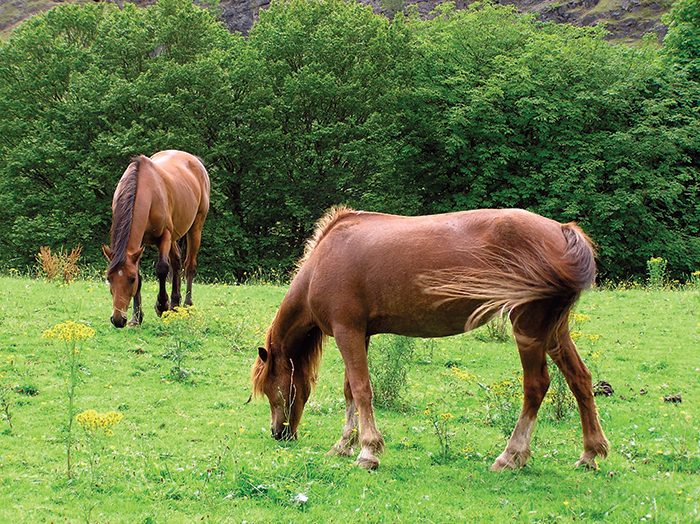Laminitis grazing management can help you to do this.
Avoiding laminitis in pasture.
The accumulation of certain carbohydrates including fructans starches and sugars non structural carbohydrates nsc in pasture forage during the spring early summer and fall particularly after rainfall precipitate this laminitis.
Limit pasture intake particularly when sugar content is expected to be high and prevent manage insulin resistance.
Avoid grazing pastures with a lot of seed heads.
Make dietary changes slowly.
They found both prior laminitis and development of acute laminitis correlated well with indicators of insulin resistance.
Avoid grazing for all horses at risk of laminitis.
If your horse has been on a specific type of hay or other forage over the past few months do not suddenly turn it out on pasture for the bulk of every day.
In a 2016 study menzies gow et al followed 446 animals on pasture over a period of three years.
If you have a sensitive horse you must manage pastures carefully.
There was no increase of fructan in the pasture when laminitis cases appeared nor no indication of diarrhea or hindgut upset.
Make all dietary changes slowly.
Research has shown that pasture induced laminitis occurs at times of rapid grass growth.
There are several steps owners can take to avoid pasture associated laminitis in the spring.
However sugar glucose and fructan content can fluctuate throughout the day and over several days.
You can effectively treat or better yet prevent it but only if you understand the mechanism.
So prevention of laminitis is two fold.
Use grazing muzzles or turn out horses on dry lots.
Managing pastures seek veterinarian approval before grazing horses prone to or with previous episodes of laminitis.
Avoid grazing lush pastures especially between late morning and late afternoon hours since plant sugars are the highest during these times.
Spring is the peak time for grass associated laminitis in most parts of the world.
The best way to deal with laminitis is preventing the causes under your control.
First what it s not there is zero evidence to support the idea that naturally occurring spring pasture laminitis is related to fructan and hind gut.
The lower part of a plant may contain the highest amount of sugar.
Theoretically at least every horse is at risk of developing laminitis if he gorges himself on enough young pasture grass in a short enough period of time to result in severe gut upset.
As your horse pastures spring back to life it may be wise to consider limiting your horse s pasture grazing time.
There are several steps owners can take to avoid pasture associated laminitis in the spring.
Therefore we must carefully manage pasture turnout and.
The only way to truly know the sugar content of your pasture is to have it tested.

